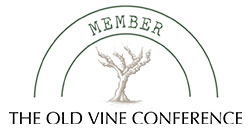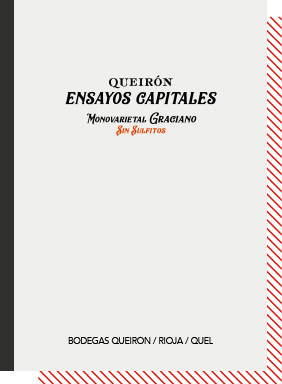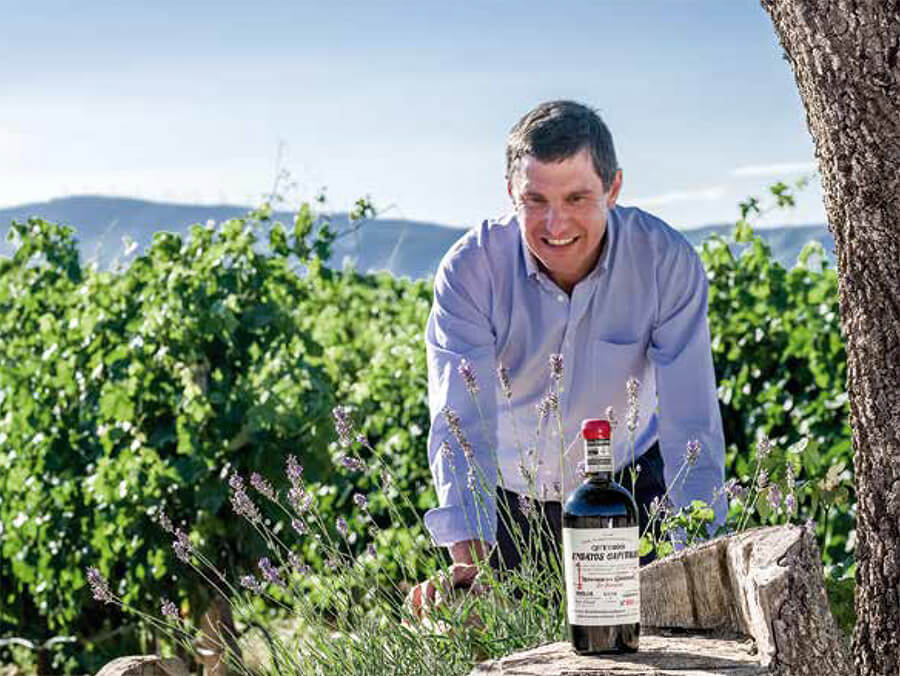Challenging
the limits
A wine is always a challenge.
A challenge, a search, and provides a glimpse into the future from a standpoint of tradition and classicism. This is the philosophy of the Ensayos Capitales project, the newest venture of the Queirón portfolio, which attempts to make wines on the edge, both in the conception of their viticulture (in this case with the Graciano, which plays a minor but essential roll in the history of Rioja) as well as with work in the cellar, where this first experimentation in making a wine without sulfites has been attempted in an effort to make our wines as natural and organic as possible, while maintaining their integrity and finesse. With Ensayos Capitales, Queirón begins a long-term research project, in which the most exquisite viticulture and the most-advanced enology go hand in hand.
Ensayos Capitales nº1
produced in the traditional gravity flow method (which defines the Queirón winery in itself). The Ensayos wines hail from a vineyard located in the village of Quel, at more than 650 meters of altitude, called ‘El Pozo’. This vineyard is composed of poor and sandy soils, with many large boulders scattered throughout. It is at a slope of fifteen degrees, and is an extremely unique terroir, especially for one of the lesser known, yet native grape varieties of Rioja: Graciano. Graciano has forever been considered the ‘grace’ of Rioja.
It represents just under two percent of all the vineyards planted within the Denomination.
Rioja Origins
This vintage was characterized as one of the longest vintages in the history of Rioja and with not so favorable climactic conditions, which meant that the winemakers had to do their best to select the highest quality grapes.
Despite this, the good weather at the end of the growing cycle was conducive to a harvest of good quality, however with a lower alcohol content in general. The abundant accumulated rainfall during the winter and spring of 2018 led to excellent vineyard health during the first months of the growing cycle.
The year was complicated in the first fort-night of July with several storm fronts as well as hail, adding to the already abundant rainfall. Fortunately, there was little damage and harvest was not greatly affected or reduced, as high temperatures typical of that time of the year persisted, and in the second fortnight of July, the rains stopped, and a warm and dry patch of weather began, which led to the desiccation of the mycelium and the recovery of the plant canopy as well as the recovery of the grape clusters themselves.
The vineyard’s overall health improved notably, and the maturation continued naturally in highlighting the larger than average size of the berries due to good weather conditions. It was a vintage marked by an abundance of excellent quality grapes both in the vineyard and in the winery and without any setbacks in terms of weather.
vintage
Technical data
Ernesto Jesús
Cruz
Sommelier from Íkaro
Logroño
(one Michelin star)

It will endure
time
Like a child going through puberty, without knowing where to go, this is how Graciano behaves, a variety with overwhelming complexity. As the years go by, it matures and focuses on what it really wants to be, a wine that stands out from the rest, aromatic, full-bodied, as well as silky and elegant. In the old days, this type of grape was used in the blends of the great aged Rioja wines, which allowed the wines to last over time. Today we can taste a bit of ‘bottled history’. It has only been in modern times where Graciano has not had a leading role on its own. Made with the technology and precision that our current world affords us, but always keeping in mind how it was made in the past so that in the future people may be able to drink ‘bottled history’. Graciano goes by several names; Cagnovali if we find ourselves in Italy, or Tintilla de Rota, if we travel to my homeland of Andalusia. I think this is where my admiration for this grape comes from, so aromatic, so subtle, so elegant that when it evolves over time it continues to have the liveliness of a young wine, with the wisdom that comes from maturity and keeping in step with the times. This is Ensayos Capitales de Queirón, a young wine made as in the past, with current precision and born with the production of a great Rioja Graciano wine that was born to last over time.
Mi Lugar
2019
The allegory of Quel
Mi Lugar Tempranillo Blanco
2021
inspiration
El Arca
2020
An ancestral journey
Queirón de Gabriel
2011
Gabriel´s dream
Ensayos Capitales Nº3
2020
Asoleao





